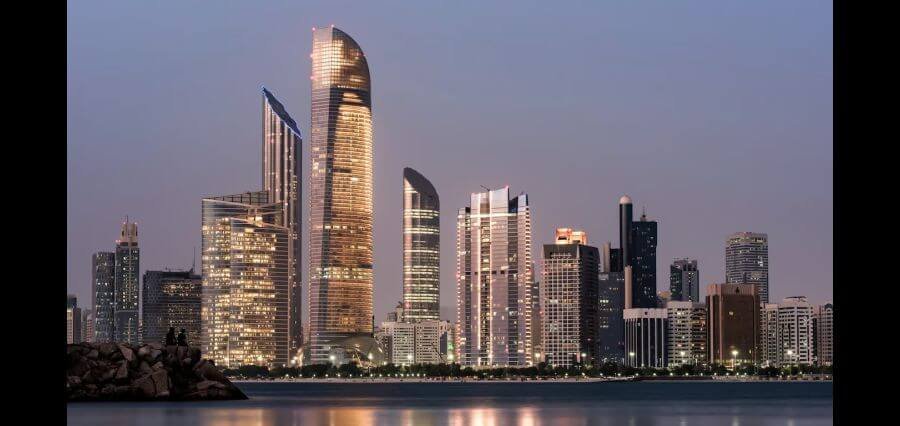Dubai, a city synonymous with futuristic skyscrapers and innovative design, has rapidly become a global leader in sustainable architecture. While the city’s skyline is often associated with luxury and opulence, Dubai is also at the forefront of pioneering green building practices, transforming its urban landscape into a model of sustainability. This article explores how Dubai is leading the way in sustainable architecture, the strategies being implemented, and the impact these practices have on the environment and future urban development.
The Rise of Sustainable Architecture in Dubai
In recent years, Dubai has recognized the importance of sustainable development and has committed to integrating green building practices into its architectural projects. The city’s rapid growth and urbanization have led to an increased focus on sustainability, driven by both environmental concerns and economic incentives. The Dubai government has set ambitious goals, such as the Dubai Clean Energy Strategy 2050, which aims to make Dubai a global hub for clean energy and green economy.
- Government Initiatives and Regulations: One of the key drivers of sustainable architecture in Dubai is the government’s proactive approach. The Dubai Municipality introduced the Green Building Regulations and Specifications, mandating sustainable practices in all new construction projects. These regulations cover various aspects of building design, including energy efficiency, water conservation, indoor air quality, and the use of sustainable materials. Compliance with these standards is required for all new buildings, ensuring that sustainability is embedded in the city’s development.
- Leadership in Energy and Environmental Design (LEED): Dubai has embraced the LEED certification system, developed by the U.S. Green Building Council, as a benchmark for sustainable architecture. Many of the city’s iconic buildings, such as the Burj Khalifa and the Dubai Opera House, have achieved LEED certification, demonstrating their commitment to energy efficiency, water conservation, and sustainable construction practices. This certification has become a standard for new developments, pushing the boundaries of what sustainable architecture can achieve.
Key Strategies in Green Building Practices
Dubai’s sustainable architecture is characterized by innovative strategies that address the unique challenges of building in a desert environment. These strategies not only reduce the environmental impact of buildings but also enhance the quality of life for residents and workers.
- Energy Efficiency and Renewable Energy: Given the region’s extreme climate, energy efficiency is a critical component of sustainable architecture in Dubai. Buildings are designed with advanced insulation, energy-efficient lighting, and smart HVAC systems that reduce energy consumption. Additionally, the use of renewable energy, particularly solar power, is becoming increasingly common. The Mohammed bin Rashid Al Maktoum Solar Park, one of the largest solar energy projects in the world, is a testament to Dubai’s commitment to harnessing clean energy.
- Water Conservation: Water scarcity is a significant concern in Dubai, making water conservation a priority in sustainable architecture. Buildings are equipped with water-efficient fixtures, greywater recycling systems, and landscaping that uses native, drought-resistant plants. These measures reduce water consumption and minimize the strain on the city’s water resources.
- Sustainable Materials and Construction: Dubai’s green buildings often incorporate sustainable materials such as recycled steel, low-VOC (volatile organic compound) paints, and locally sourced materials that reduce the carbon footprint associated with transportation. Additionally, construction practices are optimized to minimize waste, with many projects adopting modular construction techniques that enhance efficiency and reduce material waste.
- Smart Building Technologies: The integration of smart technologies is a hallmark of sustainable architecture in Dubai. Smart buildings use IoT (Internet of Things) devices to monitor and control energy usage, lighting, and climate conditions in real time. These systems allow for more efficient management of resources, leading to significant reductions in energy and water consumption. Moreover, smart technologies improve indoor air quality and occupant comfort, contributing to a healthier living and working environment.
Iconic Examples of Sustainable Architecture in Dubai
Dubai is home to several groundbreaking examples of sustainable architecture, each showcasing the city’s commitment to green building practices.
- The Sustainable City: One of the most ambitious projects in Dubai, The Sustainable City, is a model for future urban developments. This community is designed to be entirely self-sustaining, with 100% of its energy needs met by solar power. The city features energy-efficient homes, a comprehensive waste recycling system, and sustainable transportation options, including electric cars and cycling paths. The Sustainable City demonstrates how urban living can be both luxurious and environmentally responsible.
- The Dubai Frame: While primarily known as a cultural landmark, the Dubai Frame is also an example of sustainable architecture. The structure uses energy-efficient glass and incorporates renewable energy sources to power its operations. The Dubai Frame’s design minimizes energy consumption while offering visitors stunning views of the city’s past, present, and future.
- The Office of the Future: The Office of the Future, located in Dubai, is the world’s first fully functional 3D-printed building. This innovative structure is not only a marvel of modern engineering but also a model of sustainability. The 3D printing process significantly reduced construction waste, and the building features energy-efficient systems that reduce its environmental impact.
The Impact and Future of Sustainable Architecture in Dubai
Dubai’s commitment to sustainable architecture is already having a profound impact on the city’s environment and economy. By reducing energy consumption and minimizing waste, green buildings are helping to lower the city’s carbon footprint. Additionally, these practices are enhancing the quality of life for residents, promoting health and well-being, and making Dubai a more attractive place to live and work.
Looking forward, Dubai’s focus on sustainability is expected to drive further innovation in architecture and urban planning. As the city continues to grow, the principles of sustainable design will become even more critical in ensuring that development is both environmentally responsible and economically viable. The lessons learned from Dubai’s pioneering projects will likely influence sustainable architecture practices around the world.
Conclusion
Sustainable architecture in Dubai is not just a trend but a fundamental shift in how the city approaches urban development. Through government initiatives, innovative design strategies, and a commitment to green building practices, Dubai is setting new standards for sustainability in the built environment. As the city continues to lead in this area, it offers a powerful example of how urban centers can balance growth with environmental stewardship, creating a future where sustainability and innovation go hand in hand.





